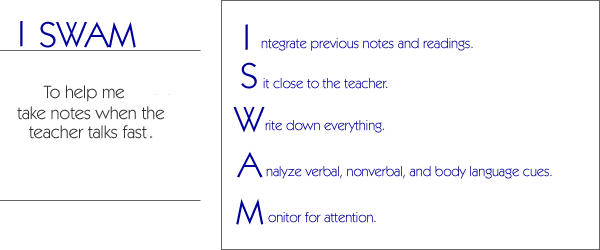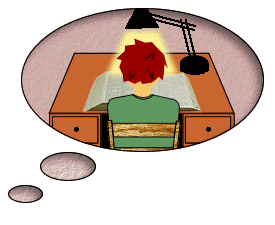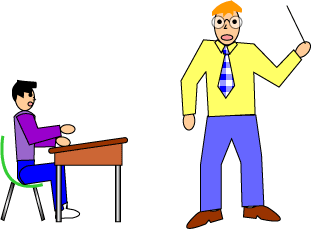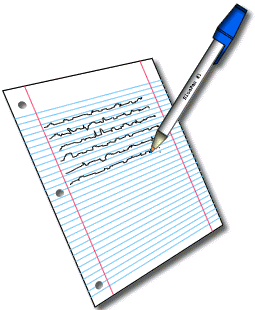|
I
ntegrate all previous notes and
readings.
|
|
|
S
it close.
|
|
|
W
rite everything.
- Teachers write down
the most important things to be remembered, so write everything
from the chalkboard or screen.
- Write down the information
the teacher gives when s/he pauses because it is expected that
you will write this and learn it.
|
|
|
A
nalyze verbal, nonverbal, and body
language cues.
- Teachers send messages
about the most important parts of their lectures by sending
verbal, nonverbal, and body language cues.
- Important verbal cues
are key words ("important") or phrases ("primary
causes of the war"). Listen for these words and write
down the ideas being conveyed. Also, listen for lists ("the
first characteristic") and write down all items that
are listed.
- Important nonverbal
cues are conveyed by the emphasis that the teacher places on
words and phrases by talking louder, by drawing out words, or
by pausing. Whenever a teacher pauses, it is usually to allow
students to write down ideas, so be sure to write these down.
- Important body language cues are conveyed
by the teacher's face, body movements, and posture. The teacher
may lean forward or use hand motions to signal important information.
Look at any change in emotion conveyed by the teacher's facial
expression (e.g., when the teacher says "This was a tragic
event," she may change her facial expression to show sadness).
|
|
|
M
onitor your attention.
|
|
|







